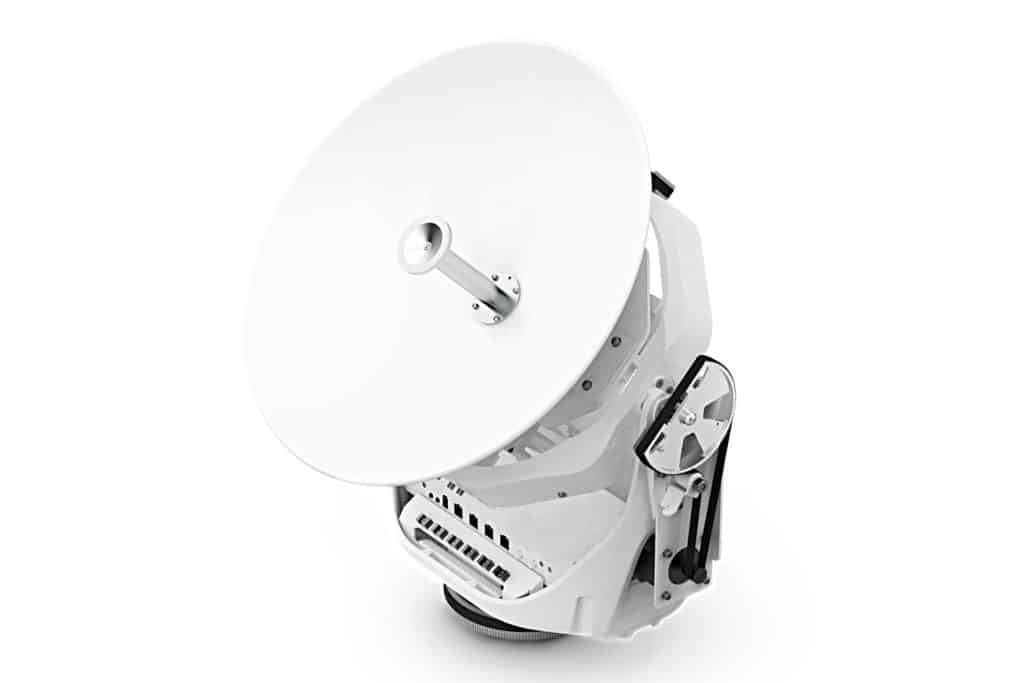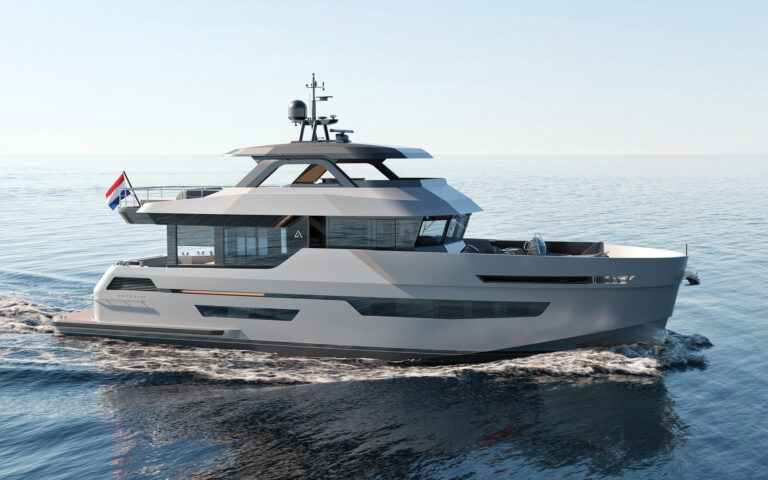
I’ll admit to feeling a pang of jealousy when I see a yacht cruise past my neighborhood park in Bellingham, Washington. The bow is pointed toward the nearby majestic San Juan Islands, and its satellite-communications antennas punctuate the skyline. These yacht owners remain comfortably connected while being able to enjoy forays to explore Pacific Northwest beaches and parks, or hikes up Orcas Island’s Mount Constitution, rather than remaining tethered to their at-home internet connections.
The trouble is, open-contract VSAT antennas historically haven’t come in small packages. Now, for smaller-yacht owners who have wanted that option, things have changed.
Marine-based VSAT (very small aperture terminal) antennas evolved in the 1980s, giving mariners dependable satellite-communication connections that improved as airtime providers developed better satellite constellations with greater throughput speeds.
But there was a catch: size. Until now, open-contract (think unlocked cellphones) VSAT systems for the recreational marine market typically employed antennas that were 60 centimeters or larger. Once inside its protective radome, even a “small” 60-centimeter antenna usually requires 60 feet of waterline to avoid overwhelming the yacht’s aesthetics.
Unlike its bigger brothers, Intellian’s v45C ($18,000; the C stands for “compact”) has a 45-centimeter antenna that’s opening new cruising and work-aboard possibilities for owners of more modest-size rides who want their choice of airtime providers. Intellian’s smallest VSAT antenna operates on Ku-band frequencies (10.7 to 14.5 gigahertz) and delivers speeds that were once the province of larger antennas.
“It used to be that small antennas were limited on their throughput, which meant 60-centimeter antennas [were needed],” says Paul Comyns, Intellian’s vice president of global marketing. Now, “performance enhancements in radio-frequency technology and satellite performance means higher throughput speeds on smaller antennas.”
To make these antennas, Comyns says, Intellian scaled down its radio-frequency componentry from the larger NX-series antennas and reduced the v45C’s component count.
A v45C system consists of a deck-mounted antenna fitted inside a radome that measures 24-by-24.6 inches and weighs 50.7 pounds; a rack-mounted antenna control unit; and a single RF coaxial cable connecting the hardware. Additionally, the system requires a modem (also typically rack-mounted) that is provided by a customer’s airtime provider and connects to the antenna control unit, as well as a wireless router.
As with land-based internet, data flows from a networked wireless device or PC to the yacht’s wireless router, to the modem, to the v45C’s antenna control unit and antenna, and then up to the airtime provider’s satellite. All received data follows the inverse route.
“The antenna control unit [governs] the antenna,” Comyns says. “The v45C isn’t concerned with [transmitted-data] traffic. It’s only concerned with pointing at the satellite and maintaining its connection.”
The v45C maintains that connection via three-axis stabilization, to keep its antenna trained at the correct satellite as a yacht pitches, rolls and heaves. “It uses stepper motors and Kevlar-reinforced belts to drive its elevation, azimuth and cross-level [trim],” Comyns says.

North America-based v45C users have a choice of airtime providers, each with their own coverage footprints and throughput speeds.
“[Speed] really depends on the airtime provider’s high-throughput beams,” Comyns says, adding that a v45C tethered to an IntelsatOne Flex plan, for example, should be able to deliver download speeds of 6 megabits per second and uplink speeds of 2 Mbps. “All [popular] cruising areas have good throughput, so the yachting world is generally covered. But if you’re outside of this [coverage], you’ll be on a slower beam.”
In addition to popular cruising haunts such as the Caribbean, the Mediterranean and New England, cruisers will likely find good coverage on regularly plied shipping and commercial-airliner routes. But, as with any airtime contract, it’s important to compare your cruising itinerary with each service provider’s coverage map, data plan and airtime rates.
Given its tidy size and weight, Intellian’s v45C can be installed aboard a range of yachts. “It’s really for the boats that are going farther afield, and for owners who are staying aboard longer and who are living and working from the boat,” Comyns says, adding that enterprise software works on VSAT. “Based on its style, a v45C would work aboard trawlers that are 40 feet and up and aboard faster yachts that are 45 feet and up. It can work on a 26-footer, but it would look out of place.”
Complementary aesthetics are a consideration for any yacht owner, and Intellian’s matching i5 TVRO antenna lets yachtsmen mount a v45C on one side of the radar arch, with the i5 on the other side. The setup allows fast satellite communications and high-definition-TV service in a favorite anchorage.
As mentioned, the v45C uses only a single RF coaxial cable, which should make for easy installation. Commissioning is done using a laptop and Intellian’s Aptus NX antenna-management and -diagnostics software wizard.
In addition to serving as the primary satellite-communications system aboard 40- and 50-footers, the v45C’s size makes it a candidate as a backup system aboard a larger yacht that carries one or more bigger antennas.
As with any antenna, smaller VSAT systems don’t deliver the same gain or throughput speeds as contemporary systems with larger-diameter reflectors, so cruisers headed to off-piste locales may need a bigger antenna or one that operates on different frequencies to stay connected. Bandwidth is also a consideration.
“More users place more demand on the [information] pipe, just like in a hotel,” says Comyns, who advises that a v45C can comfortably support two or three people and their networked devices. Likewise, v45C customers can expect more issues with rain or snow fade than owners of larger antennas. “If you’re stuck in a snowstorm on the Bering Sea, a v45C will be slow while a 60-centimeter antenna will stay connected longer.”
While the Bering Sea in winter may pose some connectivity issues for a v45C—not to mention for small yachts—cruisers with the system in more hospitable places aren’t likely to experience these challenges.
For yachtsmen seeking a capable, open-contract satellite-communications system to facilitate longer-term cruising aboard a 40- or 50-footer, Intellian’s v45C could be an option. I’m already bracing myself for additional envy at my local park as more San Juan Islands-bound yachts can now function as their owners’ private information islands.









